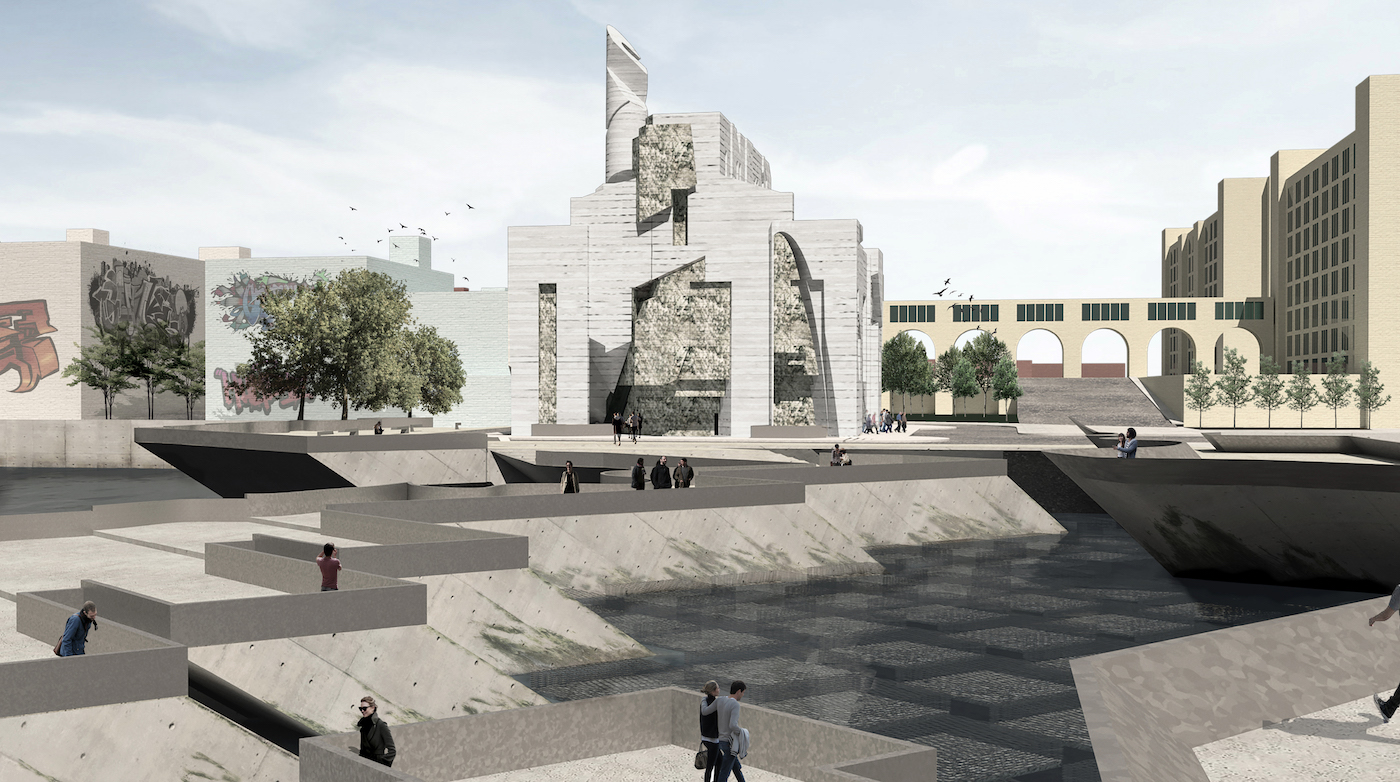As New York City rebuilds in the aftermath of a long pandemic year, Pratt students are partnering in the local Brooklyn community and beyond to support a better, more equitable future with innovative solutions. In the Making a Difference series, Pratt’s news page is highlighting ways in which students and faculty have been working towards positive change in areas including sustainability, climate change, social justice, civic engagement, and public health. This article is the second in the series.
Imagine approaching the Brooklyn Army Terminal from the ferry or subway and seeing cows grazing next to the shore, where oysters are being released to begin their time cleaning the waterways, rebuilding habitats, and even providing food. Maybe there’s also an algae farm or a geothermal power plant that not only provides sustainable energy to Sunset Park’s buildings but jobs for the people who live in the neighborhood.
Those are just a few of the designs proposed by students in the School of Architecture’s Graduate Architecture and Urban Design (GAUD) program as part of the fall 2020 Design 5: Crisicity: Urban Infrastructure in the Anthropocene studio led by Alexandra Barker, assistant chair of GAUD and adjunct associate professor-CCE, and Alex Tahinos, visiting assistant professor in GAUD. The first time Barker led this studio, it focused on a building in Red Hook. “The second time, I decided to shift to Sunset Park because there’s a lot more interest in green manufacturing there,” she said.
Each student started with the same assignment: design adaptive reuse programs for the currently vacant Boiler House, part of a warehouse complex that was home to 20,000 employees during its height in World War II, and an important driver of New York City’s industrial economy in the 20th century. The Brooklyn Army Terminal now has over 4,000 employees across a range of industries, but the historic site has the capacity to house much more and to do so in a way that benefits the local community.
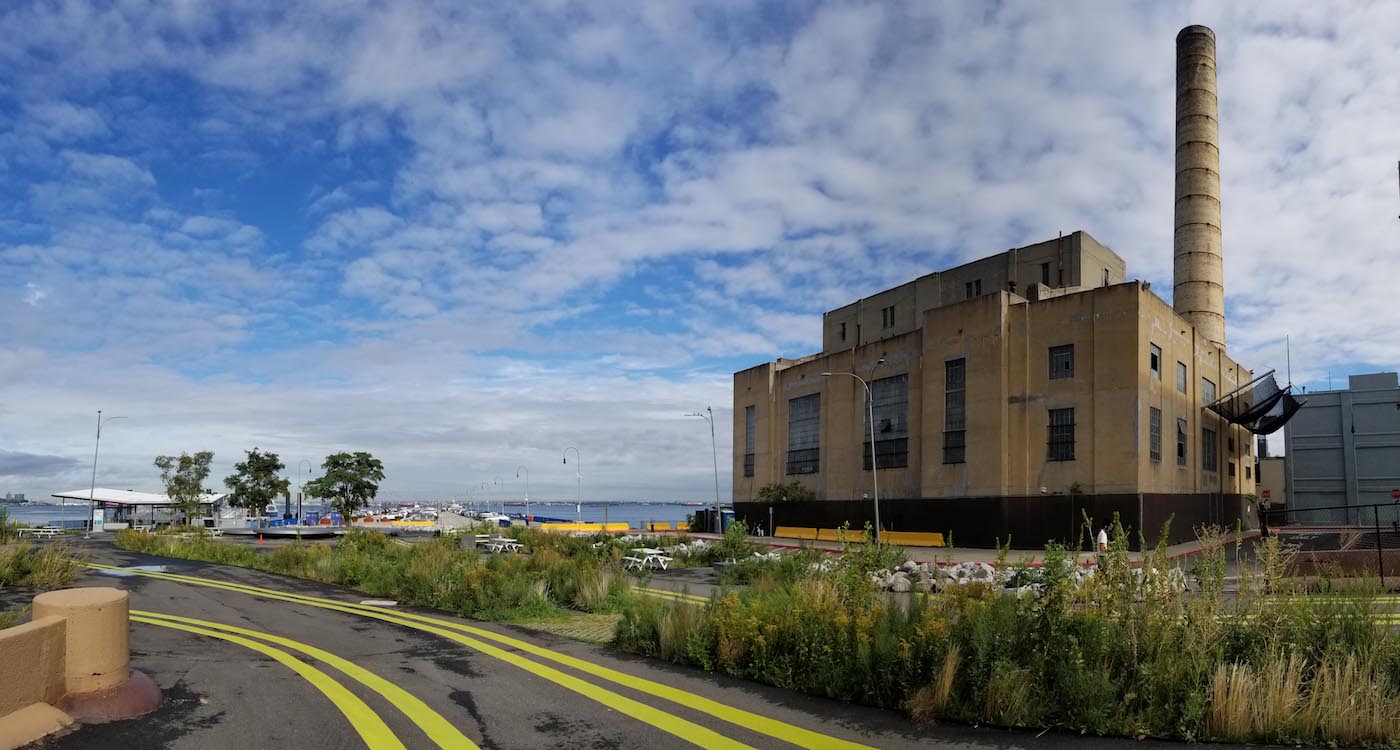
The Boiler House at the Brooklyn Army Terminal (photo by Sirinya Wutthilaohaphan, MArch ’21)
Each of the students’ projects incorporated aquaculture, a method of using waterways to produce food, restore habitats, and rebuild populations of endangered species. The studio worked with the Billion Oyster Project, an organization dedicated to rebuilding New York’s once-thriving oyster population and educating New Yorkers about the sustainable and culinary power of oysters. The students learned about algae farming and how other forms of aquaculture provide sustainable sources of food, fuel, and jobs, rebuilding marine habitats and ecosystems along the way.
The students were also asked to follow the principles of the Green Resilient Industrial District (GRID). A plan developed by the Sunset Park community organization UPROSE, GRID provides a framework for preserving the neighborhood’s industrial zoning, creating jobs for residents, and building resilience against climate change.
For Ricardo Palacio, MArch ’21, this involved a public market specifically geared for Sunset Park, in combination with aquaculture. As he explained, “I modified the interior spaces to create a continuous circulation that merges areas dedicated for hydroponics and spaces for educational purposes and urban markets.” Palacio’s design also has an educational center where visitors can learn about the oyster farm and hydroponics that take place inside the space and a market where Sunset Park residents will be able to sell their own goods to the community and visitors.
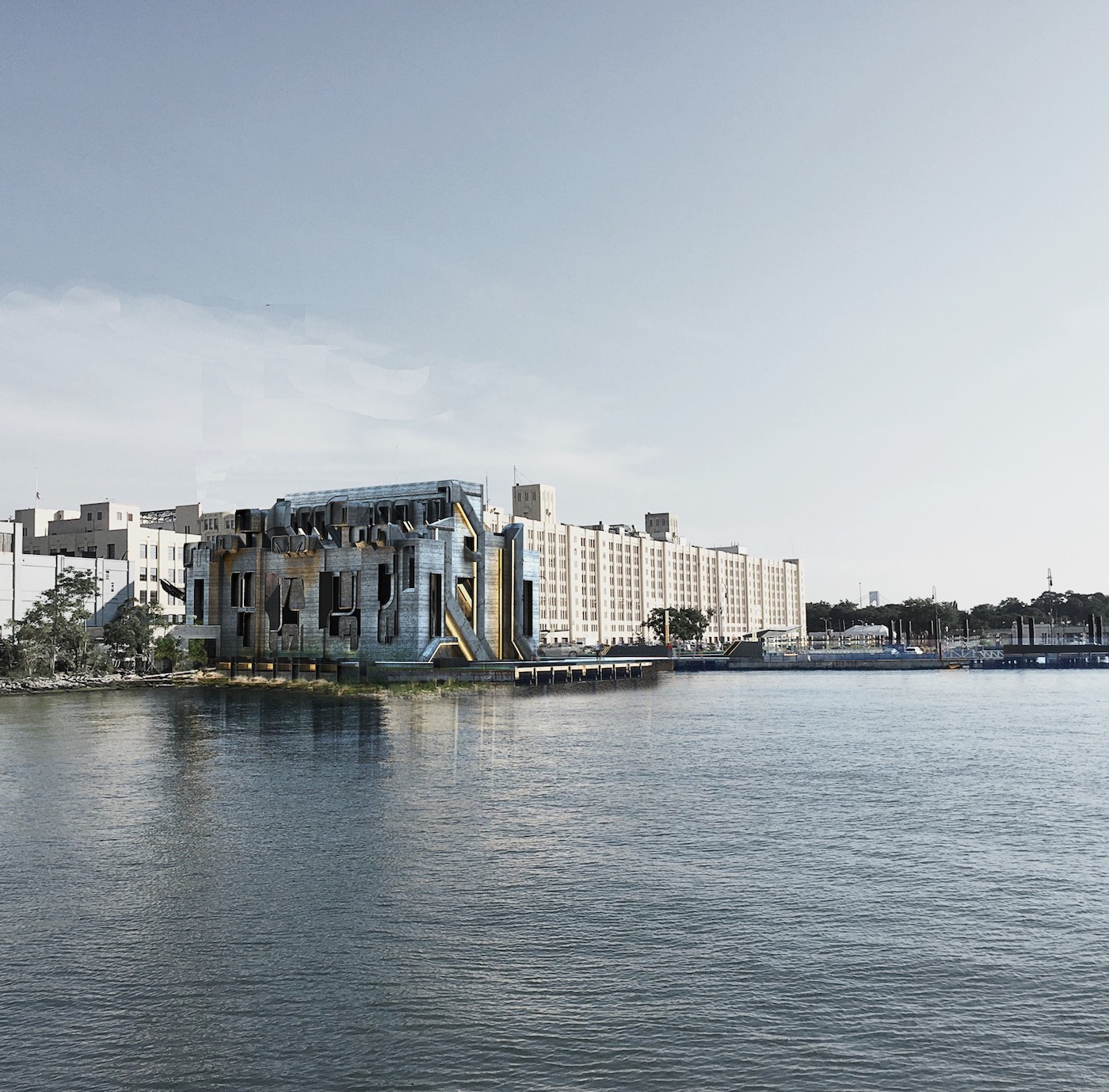
Project by Krati Maurya, MArch ’21
The plan by Krati Maurya, MArch ’21, uses a geothermal energy plant located in the Boiler House, with an oyster farm right below. The two parts support each other, with the plant generating the necessary power for the oyster farm. “My geothermal power plant is using deep water to generate energy,” she said. “So the waste water from the geothermal plant is taken and reused to grow algae for oysters. It’s serving the environmental needs of the site and also people’s needs,” as Sunset Park residents would be prioritized for jobs at the plant.
For Sohhee Oh, MArch ’21, the empty parking lot next to the site was the inspiration for an agricultural future. “I felt kind of sad to see the empty lot,” she said. “So why not use the landscape for animals?” Visiting a small farm outside New York City convinced her that cows could thrive in Brooklyn.
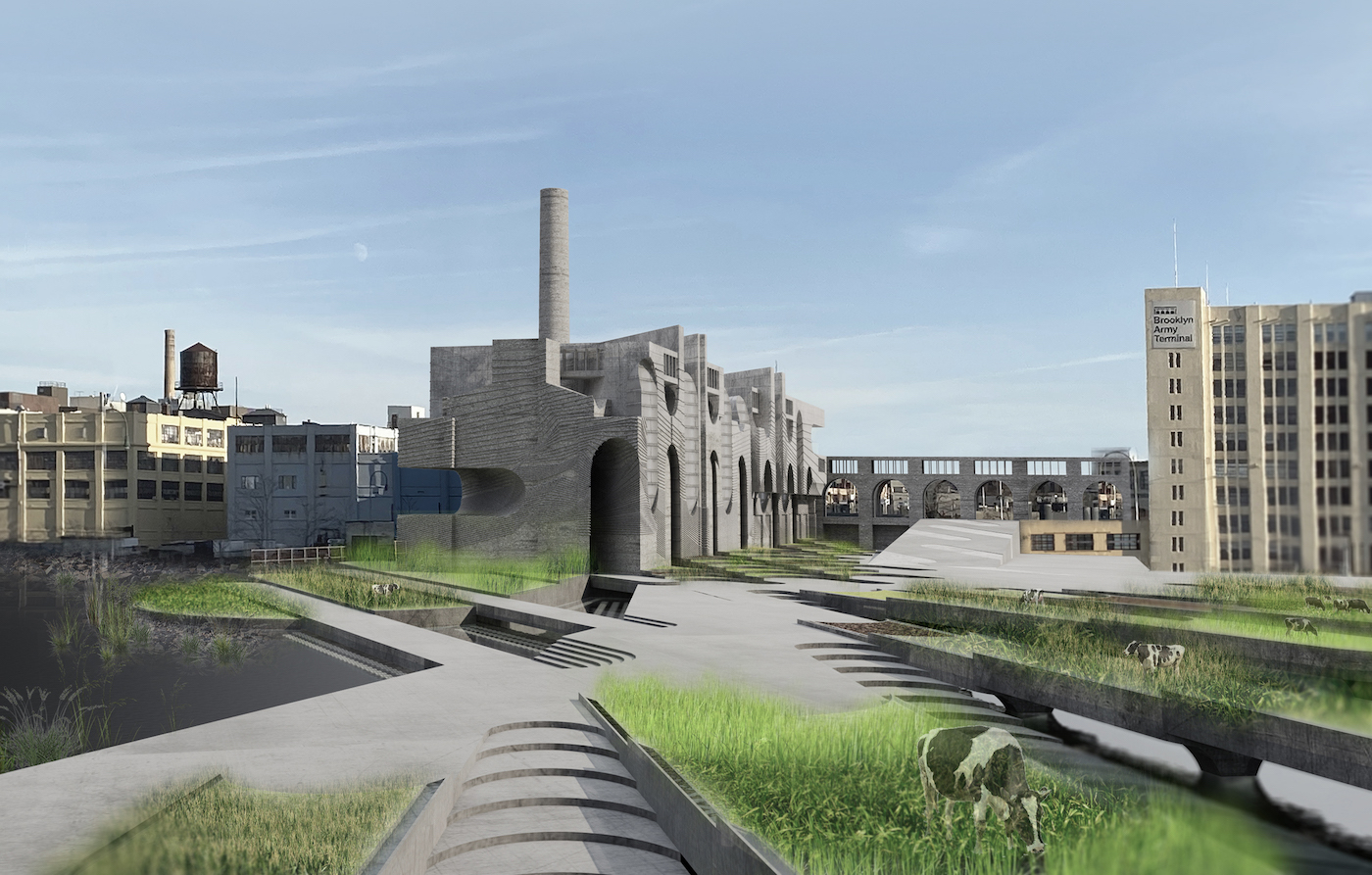
Project by Sohhee Oh, MArch ’21
In her vision, the cows would take over the parking lot and the existing building would be retrofitted to hold an anaerobic digester, which would collect waste both from the cows and from other businesses in the neighborhood to generate fuel. The oyster hatchery is on the ground floor, with easy access to the oysters’ final home: the waterfront.
Charlie Verni, MArch ’21, used a similar vantage point for his design—a person disembarking from the NYC Ferry—but instead of seeing cows, the visitors would see… nothing. His idea was to design a building that was set back from the water so it would be “invisible to the surrounding community and blend into the surrounding buildings behind.”
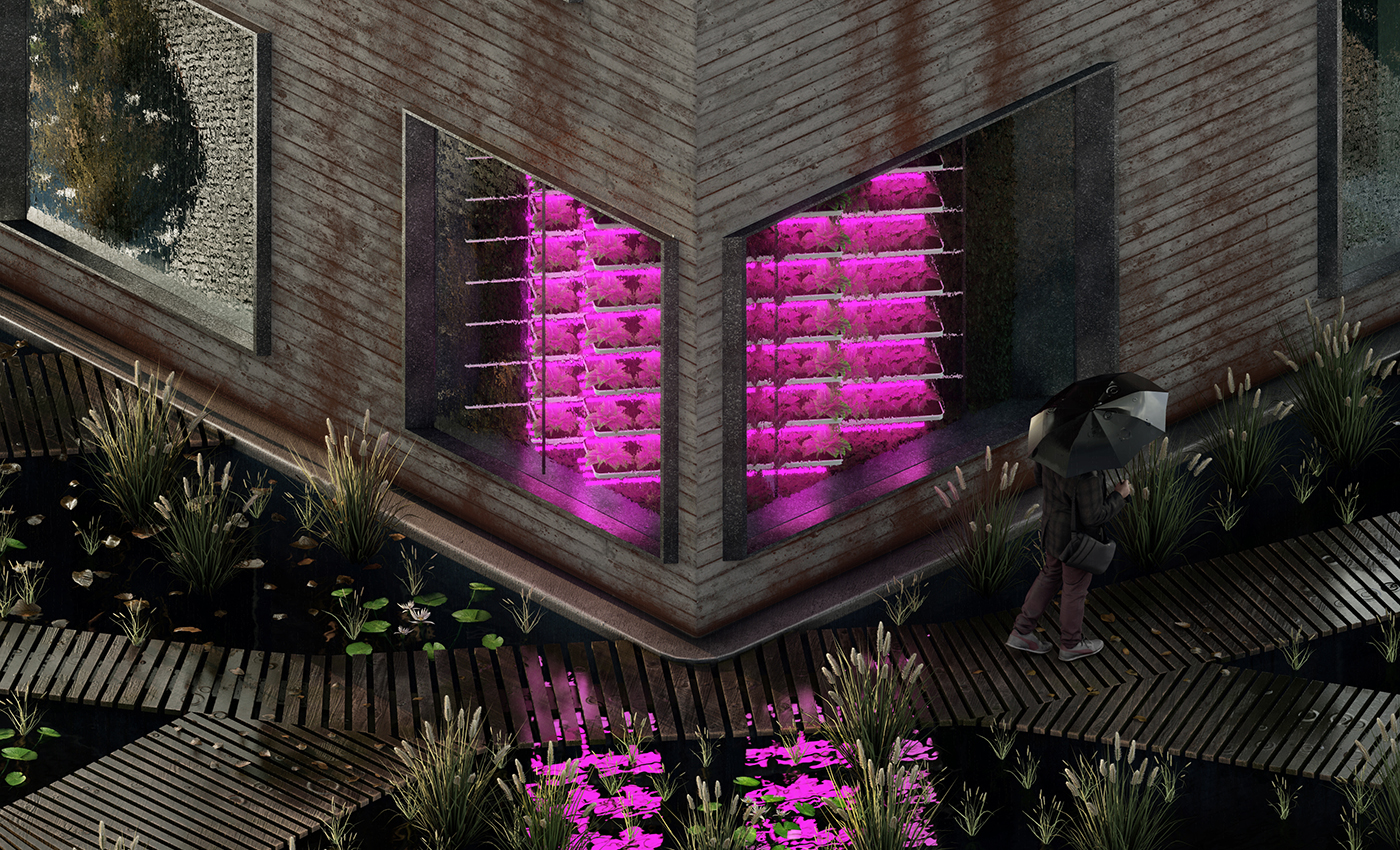
Project by Charlie Verni, MArch ’21
The building would be hidden until you come closer and would offer plenty of uses benefiting the surrounding community. Verni designed an indoor, vertical farm to grow produce for the neighborhood, on top of an oyster hatchery and algae farm. The produce would grow in a series of “grow tubes” which run up and down the length of the structure and, using grow lights and water, are cleaned by the algae farm.
These projects recognize that oysters are more than a delicious meal, that algae are more than a nuisance in a swimming lake, and that adaptive reuse doesn’t have to mean luxury. An industrial future, with the help of aquaculture, can also be a sustainable future, economically and environmentally, while addressing the needs of the local community.
See more student work from the Design 5: Crisicity: Urban Infrastructure in the Anthropocene studio on Miro.
Read additional stories in the Pratt Making a Difference series: School of Architecture Advocates for Climate Education with Pavilions & Projects on Governors Island.
